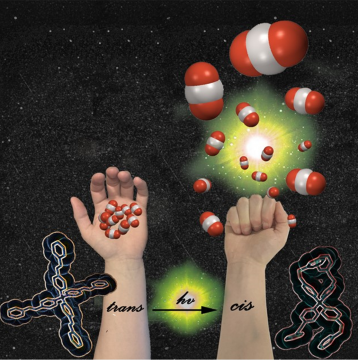Porous Materials: Design, Synthesis, Structural Characterization and Switchable Molecular Dynamics

The research activity deals with the generation of frameworks containing one-, two- and three-dimensional confined spaces with uniform and precisely engineered geometries to create new environments for capture of chemical entities. The study is focused on new materials with nanoscale architectures for storage of important gases, such as methane and hydrogen, considered as clean fuels. Additionally, carbon dioxide and other pollutants are removed from nitrogen and hydrogen by selective sequestration in pores. The construction of stable and robust covalent organic and hybrid frameworks with 3D periodic motifs can increase separation, capture and storage of small gas molecules, especially molecular hydrogen. These frameworks can arrange sites and receptors into arrays, for interacting with the targeted gas species. The adsorption properties of the novel materials are superior in many instances to the existing ones and yielded patents for applications in gas storage and purification. Characterization methods of the porous structures and of the confined gases/vapors is currently achieved by X-ray diffraction techniques: advanced experiments using synchrotron-light and neutron sources are currently performed at various European facilities, such as at ESRF (Grenoble) and Elettra (Trieste). In particular, the synchrotron XRD experiments enable the in-situ observations of the gas arrangement as well as adsorption kinetics. Additionally, the dynamics of gases and vapors in the confined state and the identification of weak interactions will be studied in depth by advanced solid state NMR spectroscopy.
A challenging issue is the dynamics of nanoporous solids. The research activity is focused on the insertion of molecular rotors in the building blocks of the porous materials, giving access to the control of rotary motion by chemical and physical stimuli. The combination of porosity with ultra-fast rotor dynamics is investigated in molecular crystals, covalent organic frameworks and MOFs by complementary techniques, which were proved to be sensitive to motion at regimes ranging from 104 to 1011 Hz. Remarkably, the rotor dynamics can be switched on and off by guest absorption/desorption, showing a change of material dynamics, which, in turn, produces modulated physical responses.
Novel fluorinated dipole-bearing molecular rotors can be inserted on porous architectures, realizing ordered arrays of fast dipolar molecular rotors. The extremely rapid re-orientation in solids is challenging and enables the fabrication of ferroelectric switches, as revealed by dielectric measurements. The combination of pore-structure and dipolar rotors can be exploited for stimulated guest release.
A series of flexible molecular crystals made by azobenzene tetramers, that form porous molecular crystals in their trans configuration is pursued. The efficient trans→cis photo-isomerization of the azobenzene units converts the crystals into a non-porous phase but crystallinity and porosity are restored upon Z→E isomerization promoted by visible light irradiation or heating. The photo-isomerization enables reversible on/off switching of optical properties as well as the capture of CO2 from the gas phase.
Research Group
Prof. Angiolina Comotti
Dr. Jacopo Perego
Research Lab
Laboratories of Synthesis of polymeric nanostructures – Building U5, Floor 1, Room 10121
Laboratories of Synthesis of porous nanostructures – Building U5, Floor 1, Room 1045
Laboratory of Crystallography for polycrystalline powders – Buiding U5, Floor 1, Room 1047
Facilities
- Laboratory for the synthesis of molecular and hybrid porous materials: solvothermal reactors, ovens for the thermal treatment up to 1600°C, Schlenk lines, glove box
- Laboratory of X-ray diffraction per polycrystalline powders at variable temperature, under controlled atmosphere and with in-situ gas loading at controlled pressure
- Volumetric gas absorber (N2, CO2) at variable temperature and pressure up to 1 bar
- Dynamic Breakthrough appartus for selective adsorption from gas mixtures (CO2, N2) and controlled humidity;
- Volumetric gas absorber (H2, CH4) at variable temperature and pressure up to 100 bar
The group has access to:
- X-ray dIffractometer of crystalline powders polveri policristalline (PXRD, Rigaku)
- Centre of Electronic Microscopy of University of Milano-Bicocca